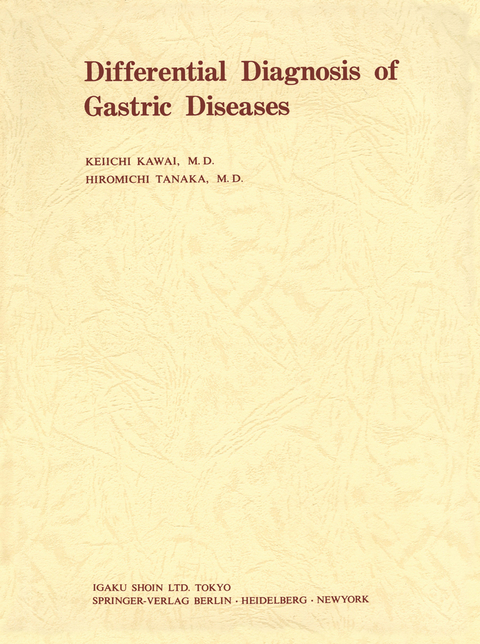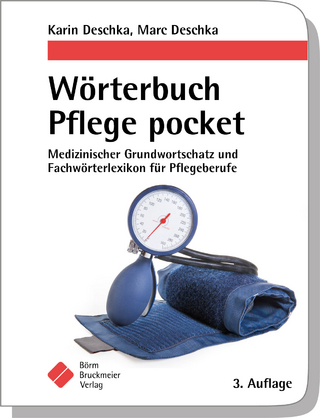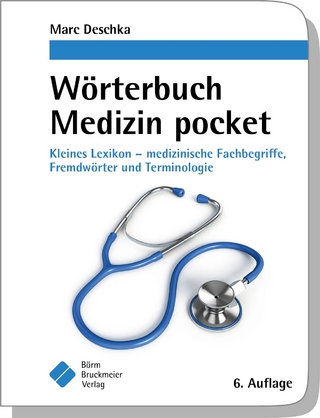
Differential Diagnosis of Gastric Diseases
Springer Berlin (Verlag)
978-3-642-65767-2 (ISBN)
1. General Section.- A. On the concepts of protruding and excavated lesions.- 1. The protruding type of gastric lesion.- 2. The excavated type of gastric lesion.- B. The fundamentals of an x-ray diagnosis.- 1. General remarks on the technique of x-ray diagnosis.- a. Filling study.- b. Mucosal-pattern study.- c. Double-contrast study.- d. Adequate-compression study.- e. Polysography.- 2. X-ray findings on examination.- a. Protruding lesions.- b. Excavated lesions.- 3. Technical details of x-ray examinations.- a. Application of the prone position double-contrast method.- b. The problem of optimal compression.- c. Direction of the compression.- d. Compression phase and stage.- e. Application of respiration.- f. Conversion of position.- g. Suggestions for x-ray examination of protuberances.- 4. How to diagnose protuberant lesions.- a. Is there a protuberance in the stomach?.- b. Is the gastric phyma nonepithelial or epithelial?.- c. If it is a tumor, is it benign or malignant?.- d. If it is an epithelial malignant phyma, is it an early cancer (type I or II) or an advanced case?.- e. Malignancy judged by surface characteristics.- C. The fundamentals of endoscopic diagnosis.- 1. Basic problems of endoscopic examination.- a. Subjects for endoscopy.- b. Instruments for gastric endoscopy.- 2. Clinical application of endoscopy.- a. Routine examination.- b. Accurate examination.- 3. Technical details of endoscopy.- a. Endoscopic fundamentals for excavated lesions.- b. Practical suggestions in endoscopic observation.- c. The endoscopic features of an excavation in vivo and the resected stomach.- d. Protruding-excavated type lesions in endoscopy.- 4. Special remarks on endoscopic examination.- a. Lesions on the anterior wall and multiple lesions.- b. Difficulties in observing lesions from the frontal view.- c. Limitations in observing existence and quality of lesions.- d. Cytology and biopsy in diagnosing gastric lesions.- II. Case Presentations.- Protruding type.- A. Typical cases of gastric polypous lesions.- 1. Protruding types of advanced cancer of the stomach.- a. Borrmann I type (Fungating type).- b. Borrmann II type (Ulcerating type).- 2. Protruding types of early gastric cancer.- a. Type I (Protruding type) early gastric cancer.- b. Type II a (Superficial elevated) early gastric cancer.- 3. Gastric epithelial, benign tumor (Gastric polyp).- a. Hyperplastic polyps.- b. Adenomatous polyps.- 4. Nonepithelial tumor (Submucosal tumor).- a. Leiomyoma.- b. Neurogenic tumor.- 5. Polypoid early gastric cancer (Type I).- B. Indistinguishable cases.- 1. Prolapsing gastric polyps.- 2. Leiomyoma prolapsing into the duodenal cap X-ray pictures of gastric tumors prolapsing into the duodenum.- 3. Exogastric compression.- 4. A typical neurogenic tumor.- 5. Adenoma and Cyst.- C. Rare cases.- 1. A case of type I early gastric cancer invaginated into the duodenum.- 2. Polyposis.- 3. Polyp accompanied by leiomyoma.- 4. Sarcoma of the stomach.- a. Leiomyosarcoma.- b. Malignant lymphoma of the stomach.- 5. Eosinophilic granuloma (Inflammatory fibroid polyp).- 6. Bezoar.- Excavated type.- A. Typical cases of gastric excavated lesions.- 1. Excavated types of advanced cancer of the stomach.- a. Borrmann type II (Noninfiltrative carcinomatous ulcer).- b. Borrmann type III (Infiltrating carcinomatous ulcer).- 2. Excavated types of early gastric cancer.- a. Type IIc (Superficial depressed type) early gastric cancer.- b. Type III (Excavated type) early gastric cancer.- 3. Gastric ulcer.- a. Acute ulcer.- b. Chronic gastric ulcer.- c. Ulcer scar (Scarring ulcer).- 4. Erosion of the stomach.- a. Flat erosion.- b. Erosive gastritis.- B. Indistinguishable cases.- 1. Small size type IIc early gastric cancer.- 2. Indistinctly bordered, very shallow type He early carcinoma (IIb-like lesion).- 3. Benign or malignant ulcer.- 4. Widespread type Ha early gastric cancer (in which it is difficult to show the presence of an excavation).- C. Rare cases.- 1. Sarcoma of the stomach (Depressed type).- 2. Reactive lymphoreticular hyperplasia.- a. Localized hypertrophic form.- b. Diffuse flat form.- 3. Acute phlegmonous gastritis.- 4. Granulomatous diseases of the stomach.- References.
| Erscheint lt. Verlag | 7.12.2011 |
|---|---|
| Zusatzinfo | VI, 262 p. |
| Verlagsort | Berlin |
| Sprache | englisch |
| Maße | 210 x 280 mm |
| Gewicht | 672 g |
| Themenwelt | Medizin / Pharmazie ► Allgemeines / Lexika |
| Schlagworte | Diagnostik • Magenkrankheit |
| ISBN-10 | 3-642-65767-2 / 3642657672 |
| ISBN-13 | 978-3-642-65767-2 / 9783642657672 |
| Zustand | Neuware |
| Haben Sie eine Frage zum Produkt? |
aus dem Bereich


